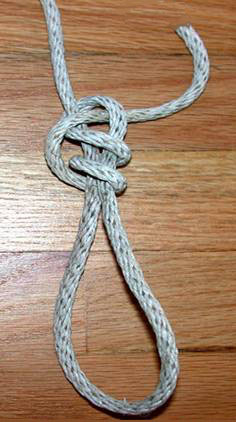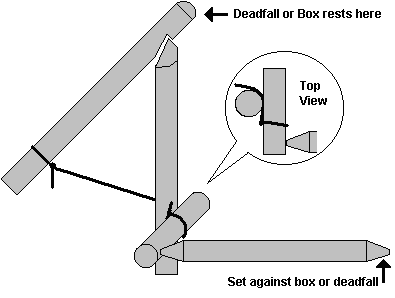 |
 |

Ashley Snare Knot:
Let a loop hang down in your left hand, with the free end coming back up close on the right side (the hanging loop forming a noose), and leave about a foot of rope remaining on the free end. Pass the free end to the back of the rope in your left hand (back of the top of the noose you are forming – this forms the topmost cross of the noose, referred to below), and bring it down around the front. Let that free end cross over the front of the noose/loop, and go back around the back again, with these wraps nicely proceeding in a spiral downward. When the free end comes back to the front the second time (being wrapped twice around the top of the noose), bringing it across the front of the noose, push the free end up through the first (the topmost) cross made at the top of the noose, so that the free end comes through and out along the same path taken by the other end of the rope.






The Paiute deadfall was a big favorite of the Indians of the eastern Sierras. It only took a small bit of twine or corded grass, and it was very easy to make many of them for an area. Practice this deadfall yourself.